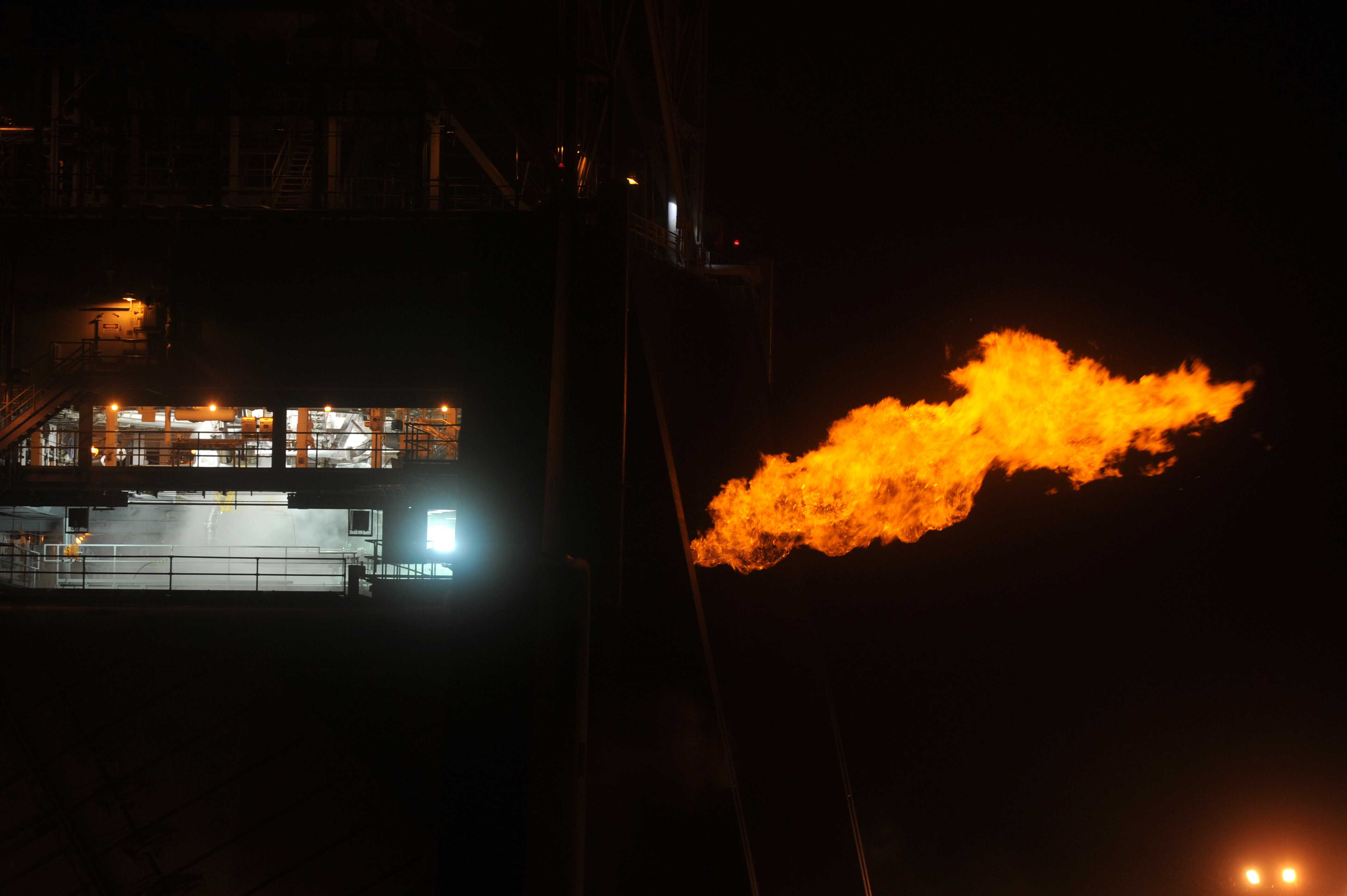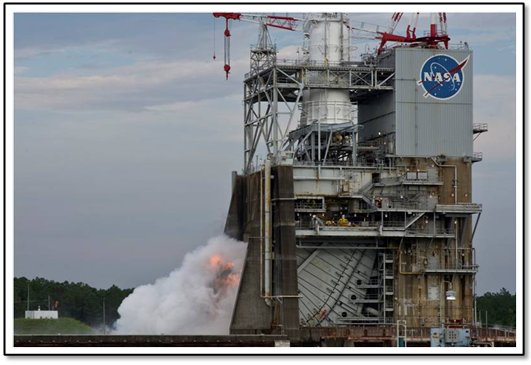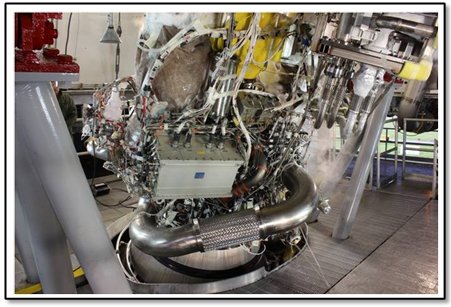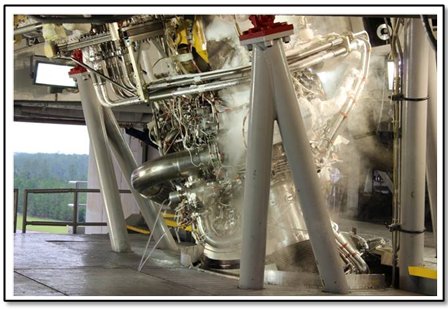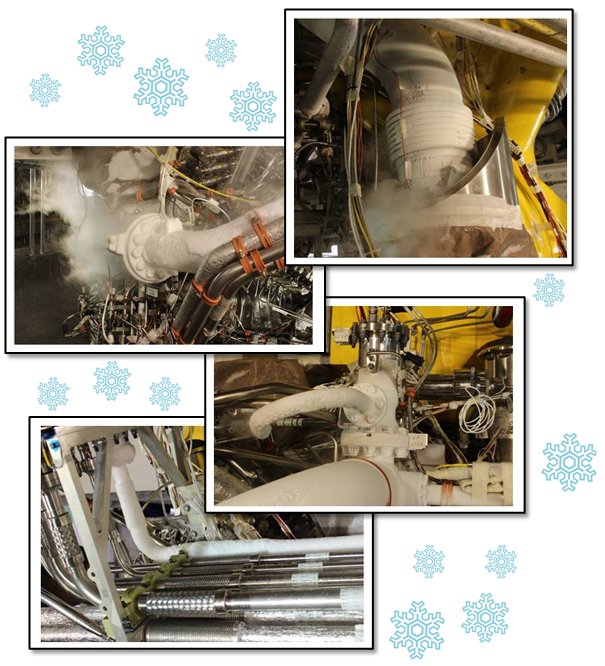If you go back through the J-2X Development Blog articles, you’ll find one about the “Burp Test” that we conducted last July on J-2X development engine E10001. In that case, we ran a very short test where we activated the helium spin start system and we ignited the main chamber, very briefly, before we shut down the whole thing. Well, here we are about six months later and we’re doing the equivalent thing on the J-2X PowerPack Assembly 2 (PPA2). Here is a video of the test:
Testing at night is always so much more dramatic.
For the PPA2, there is no main chamber to light, so this entire test was primarily focused on exercising the helium spin start system. The flames that you see are from flare stacks necessary to get rid of the hydrogen used in the test. Remember, the PPA2 is primarily a test article for turbomachinery and the gas-generator turbine-drive system. It doesn’t make thrust. All of that hydrogen that gets pumped by the fuel turbopump has to be disposed of in a controlled manner other than in the production of thrust. So, we burn it off. The liquid oxygen is disposed of as well, but it doesn’t require anything quite so gaudy as flare stacks.
Interestingly, when hydrogen burns, it usually burns clear. The whole orange-flame thing is not something I entirely understand, but it always looks that way at night. There’s some propane in the flame used as kind of like a pilot light, but not enough to cause that much color. It could be that burning hydrogen at such a low mixture ratio (i.e., not enough oxygen immediately available so you get afterburning effects) is the cause of this as compared to the usual white hot rocket engine exhaust. It’s also possible that it’s stuff in the air or somehow water vapor effects, or disassociation effects, but I honestly don’t know. Any ideas from anyone else? I’d love to hear some theories. I do know that if you’re standing anywhere where you can see the flame, you can feel the heat radiating from it. It’s quite an impressive experience.
Beyond exercising the helium spin start system, what this test also did is prove out the test stand subsystems, the test stand and test article control systems, demonstrates that the gobs and gobs of instrumentation is hooked up, working properly, and feeding back reasonable data, and that the proper procedures are in place to conduct a safe test. Every facet listed is a big, big deal and has to work in conjunction with everything else.
The folks at the Stennis Space Center — civil service, support contractors, and prime contractors alike — all deserve kudos for pulling this off successfully and, really, with minimal technical issues. Way to go guys! This test is yet another in a long string of demonstrations of the power of collaboration and the overall dedication and excellence of the J-2X team. We’re now ready to step into the meat of the test series and start putting the hardware through its paces. This is going to be exciting! Go J-2X!
